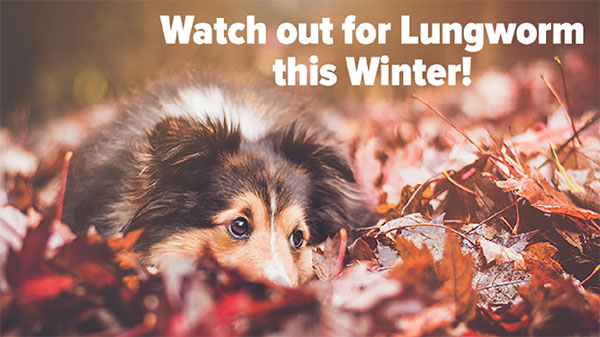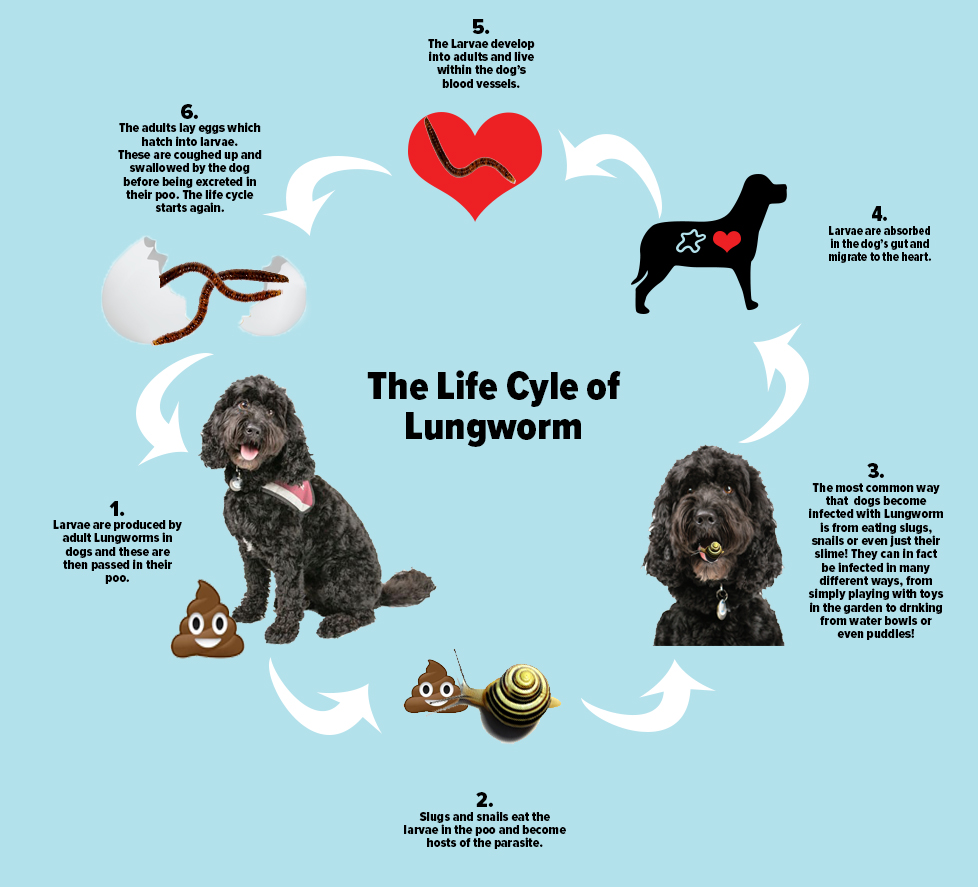As we approach Winter with it's wetter and colder climate, it's time to get down and dirty with the moisture-loving critters carrying a nasty parasite affecting our precious pooches. Lungworm (Angiostrongylus vasorum) is a nasty parasite on the rise in the UK, so to ensure that our clients are as well informed as possible we have put together some must-know facts about this 'poopy' parasite:

1.Slimy slugs and snails are the main culprits for spreading Lungworm which is why greedy doggies who eat these slimy garden critters are considered at high risk. We therefore highly recommend not leaving dog toys out in the garden at night, where in an average UK garden a reported +20,000 slugs and snails live!
2.Dogs of all ages and breeds can become infected, but younger doggies are more prone to picking up bugs including Lungworm.
3.Infected pooches spread the parasite into the environment as the Lungworm larvae is expelled in their poo, and slugs and snails that come into contact with the poo become infected, increasing the chances of other dogs becoming infected.
4.Foxes can also become infected with Lungworm, and have been implicated in the spread across the country.
5.Other slimy garden delicacies like frogs can also carry the larvae, presenting another risk to your precious pooch. Un-fur-tunately, with more people travelling in the UK with their pets, and foxes roaming up to 50km, the risk of Lungworm spreading around the country will continue, so it's important to know the effects, symptoms and life cycle of the Lungworm.
THE LIFE CYCLE OF LUNGWORM

SYMPTOMS
We encourage all doggy owners to keep an eye out for the following symptoms but it is worth bearing in mind that not all pets show symptoms in the early stages of infection:
- General Sickness (Diarrhoea, Poor Appetite, Vomiting, Weight loss)
- Breathing problems (Coughing, Tiring Easily)
- Behaviour Changes (Depression, Seizures, Lethargy)
- Poor Blood Clotting (Nose Bleeds, Excessive Bleeding, Bleeding into the Eye)
PREVENTION & TREATMENT
The paws-itively good news is that prevention can be achieved with monthly use of preventative products :) However, not all worming treatments are effective against the Lungworm parasite so make sure you always check with one of our paw-esome vets. Once diagnosed and treated, most doggies make a full recovery, but we believe the key to successful treatment is taking action early!
LUNGWORM IN CATS & HUMANS
Cats can become infected with another type of Lungworm (Aelurostrongylus abstrusus), but have no fear, infections seem to be rare and the outcome is far from cat-astrophic :) This particular parasite is not known to infect humans, but dogs and cats can carry Roundworms, which can cause diseases in humans, so make sure you keep your pet’s parasite protection programme up-to-date. To find out how many cases of Lungworm have been identified in your area, use this helpful Lungworm map locator.
Best wishes, Judy.xxx
Judy Walker B.Vet.Med MRCVS. Founder of easipetcare - find out more about Judy here!